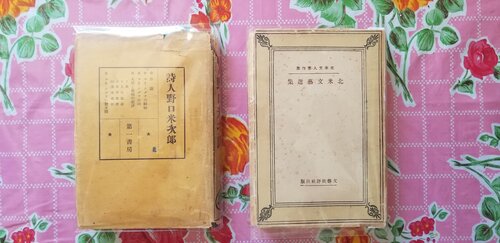
The Golden Age of Japanese-language U.S. Nikkei Literature
Did you know there was a golden age of Japanese-language Nikkei literature in the United States during the 1920s and 30s? Despite laws that legalized anti-Asian racism throughout the country, Issei (first-generation immigrant) literary activity flourished in Japanese American communities.
Early writing consisted of haiku and tanka with a focus on Japan, a wistful looking back. Literature columns in Japanese-language newspapers such as the Rafu Shimpo were crowded with creativity.
Eventually, literary magazines also developed. A major landmark was the magazine Shūkaku / Harvest (Issue No. 1 was published in 1936), the community’s first multi-genre, general literary magazine, with contributors spanning the US West coast and mountain states. It published six issues before suspending operations in 1939.
Harvest featured poems, stories, and essays touching on a broad range of topics, including daily life, relationships, social and racial problems, politics, Japan, the US, literary criticism, and more. It published some writing in English, but for the most part, it focused on Issei, Kibei, and Nisei writing in Japanese.
Few in the US can directly access this literature since it was written in Japanese for Japanese readers, but it was in places like Harvest that Nikkei began to formulate a distinctly Japanese American sensibility. Some specifically envisioned the creation of an “immigrant literary arts” separate from Japan.
Click here to flip through Harvest’s first issue—on page eight is a poem in Japanese by Morio Hayashida, who lived near the Crenshaw District. Hayashida’s grandson, Hirokazu Kosaka, is JACCC’s Master Artist in Residence. Stay tuned to read translated excerpts from this magazine.